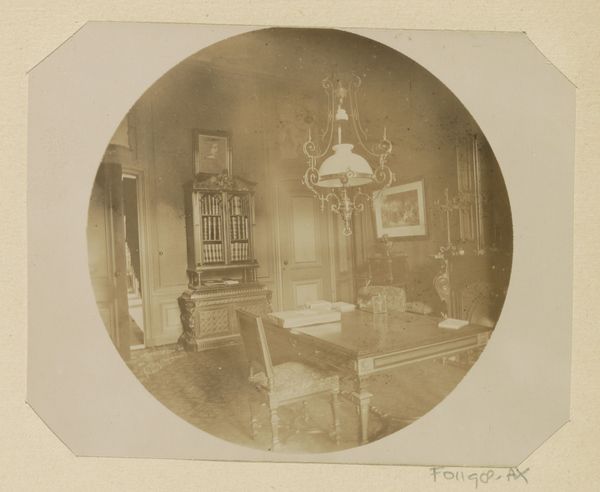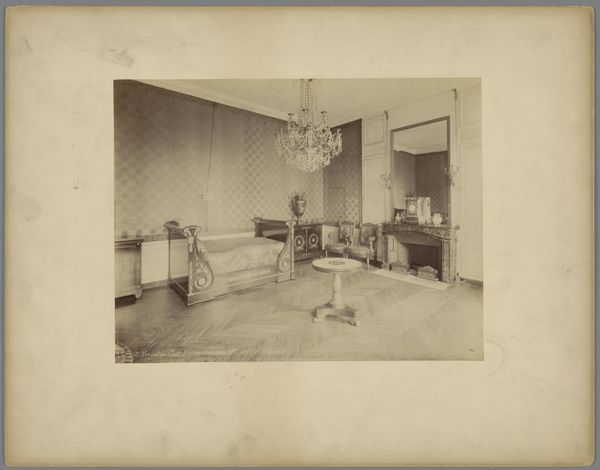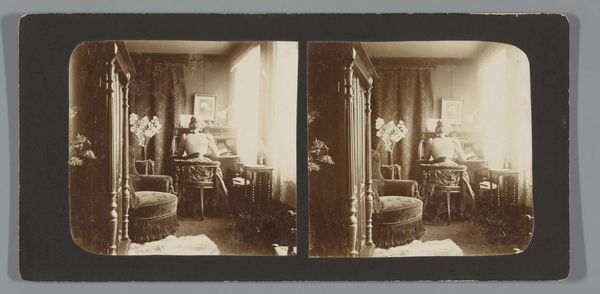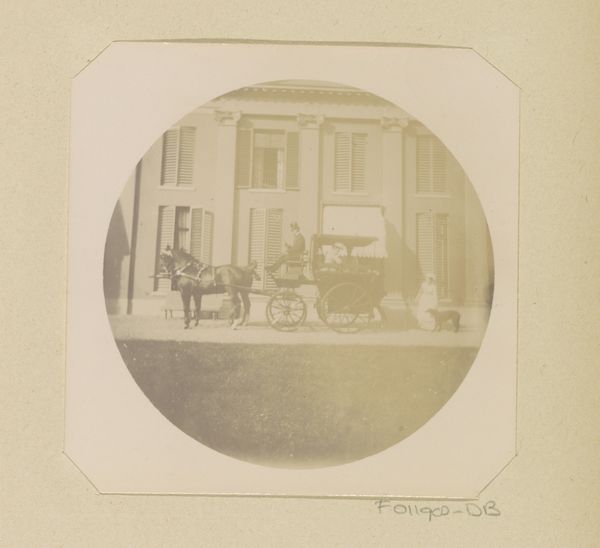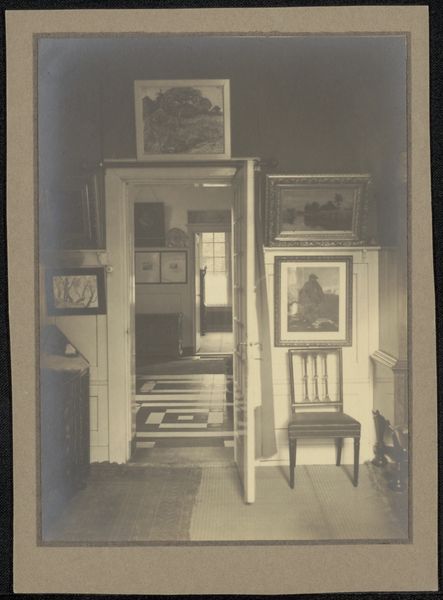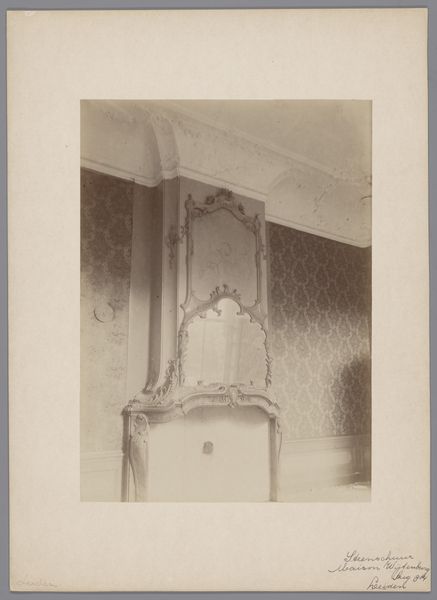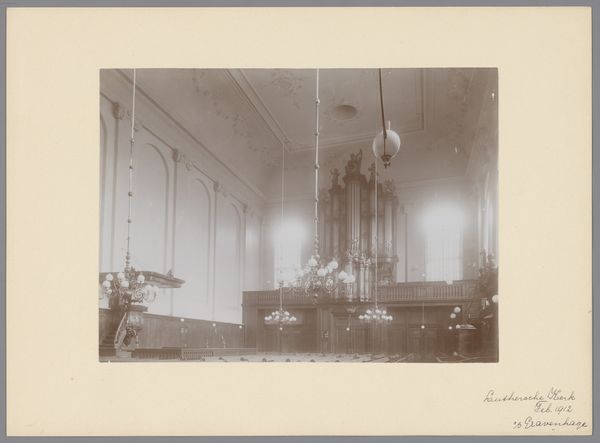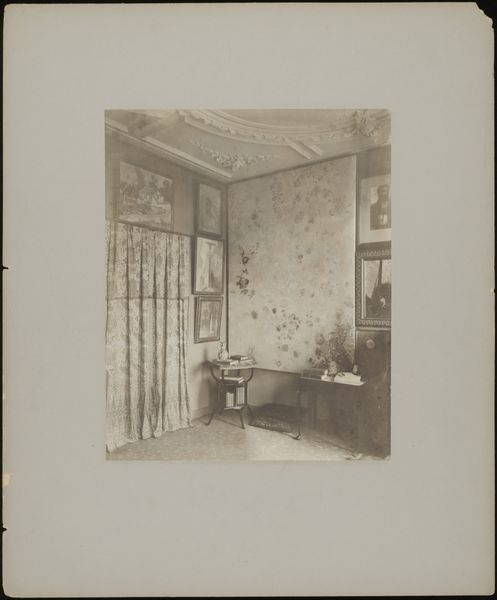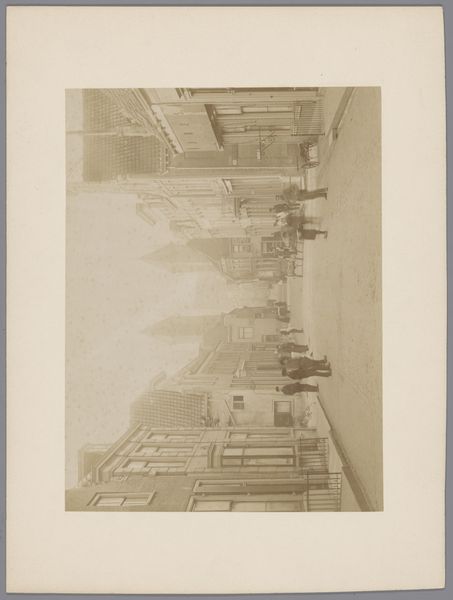
photography
#
still-life-photography
#
photography
#
realism
Dimensions: height 105 mm, width 90 mm
Copyright: Rijks Museum: Open Domain
Curator: The albumen print before us, entitled "Interieur van het huis aan Herengracht 258, Amsterdam", taken sometime between 1889 and 1893 by Johanna Margaretha Piek, offers a peek into a late 19th-century Dutch home. Editor: It feels staged, doesn’t it? The empty chair, the array of objects displayed, it almost seems like a photograph designed to showcase affluence and… perhaps, a particular taste. Curator: Precisely. Note the objects on the mantelpiece. Every piece carefully chosen, consciously placed, telling us something about the owners, their social aspirations, perhaps even their profession. The mirror and paintings act as signifiers of status and artistic appreciation, echoing symbolic motifs of the "good life". Editor: That’s the official reading, but doesn't it feel… sterile? The opulence is almost oppressive. Who has time to admire all these ornaments? I think it speaks more to the constraints placed upon women, for example, managing such a house, where image trumped comfort. Curator: Interesting point. Looking closer, that stack of paper to the left and what appears to be other various clippings adhered to the walls might show an interior not necessarily obsessively cared for, hinting at other, more human, elements at play, like one's curiosities and interests reflected in the surroundings. These details function as individual identifiers of its owner within the frame of the artwork. Editor: That very idea seems progressive for this era, but ultimately still tied to consumerism as an activity to shape identity, which persists to our contemporary culture. Who is served when interiors and its furnishings serve as a projection of self worth? The interior remains as a reflection of inequality. Curator: Still-life photography such as this allowed viewers to access otherwise private domestic worlds. As such, Piek uses objects as a way to represent and, ultimately, invite conversation about its owners. Editor: Absolutely. These are artifacts of a particular societal strata. By making these personal spaces so clearly public, we're allowed glimpses into the ideologies upholding the late nineteenth century as well as our own time. Curator: Thank you, it's amazing how a seemingly straightforward photograph of a room becomes such a complex narrative, offering layers of interpretations across decades and still relevant to cultural critique today. Editor: Indeed, It serves as a visual record, of course, but also a mirror reflecting our present-day obsessions.
Comments
No comments
Be the first to comment and join the conversation on the ultimate creative platform.
